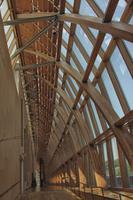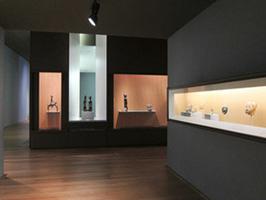This article is from our Toronto Feature series. Features from past programs are not updated.
This content is from a series created in partnership with Museum Services of the City of Toronto and Heritage Toronto. We gratefully acknowledge funding from the Ontario Ministry of Tourism, Culture and Sport, and the Department of Canadian Heritage.
"Art Gallery Becomes a Gehry Masterpiece"
When publisher and art collector Ken Thomson donated his 2000-piece art collection and $70 million to the Art Gallery of Ontario, the gallery directors knew that they needed to expand. The search for an architect led to Frank Gehry. Founded on a bequest from Harriette Smith, who left The Grange as the Art Museum of Toronto after the death of her husband Goldwin Smith in 1910, the gallery had undergone numerous changes and expansions as the result of generations of philanthropy. The challenge of a new design would be to blend this history with the future.
It was not difficult for Frank Gehry to forge a deep emotional tie with this project. He grew up in the neighborhood and it was at the AGO that he first experienced art as a child. The glass façade on Dundas Street, evoking a crystal ship drifting through the city, seems to embrace passers-by below. The glass overhanging the street angles back slightly to reflect the facades of the pretty Victorian and Georgian houses across the way, intricately connecting art and the city. Behind the glass, the new Galleria Italia, a sculpture gallery, stretches the full length of the building, flooded in natural light.
To the south, at the back of the building, a tower sheathed in titanium and glass overlooks the 1817 Grange mansion, connecting the museum to the city and to the past. At the zenith of his great career, Gehry has created an internationally acclaimed showcase of Canadian art, and given Toronto an architectural landmark for the ages.

 Share on Facebook
Share on Facebook Share on X
Share on X Share by Email
Share by Email Share on Google Classroom
Share on Google Classroom





